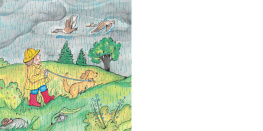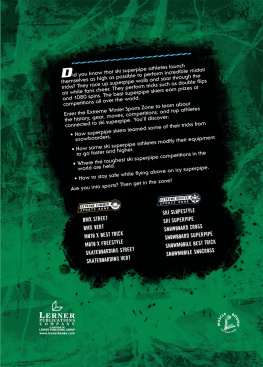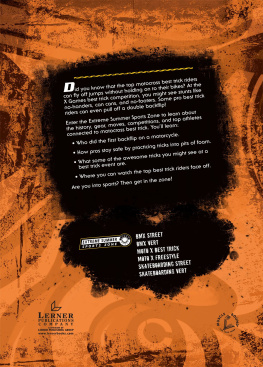For Jeffrey and Ken Goldfarb
Special thanks to
Jennifer Guille and Dyan deNapoli
of the New England Aquarium,
Boston, Massachusetts
Copyright 1998 by Gail Gibbons
ALL RIGHTS RESERVED
Printed in the United States of America
Library of Congress Cataloging-in-Publication Data
Gibbons, Gail.
Penguins! / by Gail Gibbons. 1st ed.
p. cm.
Summary: Describes the habitat, physical characteristics, and
behavior of different kinds of penguins.
ISBN 0-8234-1388-8
1. PenguinsJuvenile literature. [1. Penguins.] I. Title.
QL696.S473G44 1998 98-5194 CIP AC
598.47dc21
ISBN 0-8234-1516-3 (pbk.)
ISBN-13: 978-0-8234-1388-1 (hardcover)
ISBN-13: 978-0-8234-1516-8 (paperback)
ISBN-10: 0-8234-1388-8 (hardcover)
ISBN-10: 0-8234-1516-3 (paperback)
Here come the penguins, straight and tall. They walk with a waddle, yet look stately and dignified.
There are seventeen different kinds of penguins. The smallest is the little blue penguin. It is about one foot (30 centimeters) tall. The biggest of all penguins is the emperor penguin, standing almost four feet (120 centimeters) tall.
SOME KINDS OF PENGUINS
EMPEROR
PENGUIN
MACARONI
PENGUIN
GENTOO PENGUIN
KING
PENGUIN
CHINSTRAP
PENGUIN
GALAPAGOS
PENGUIN
LITTLE BLUE
PENGUIN
also called
FAIRY
PENGUIN
All penguins have black or bluish - gray backs and white bellies. The patterns around their necks and heads are what make them look different. Some have colorful patches. Others show off brightly colored crests. But they all have the same basic body shape and characteristics.
ROCKHOPPER
PENGUIN
CREST
MAGELLANIC
PENGUIN
YELLOW- EYED
PENGUIN
AFRICAN PENGUIN
also called JACKASS or
BLACK- FOOTED
PENGUIN
ADELIE
PENGUIN
EYE
CROWN
BEAK or BILL
THROAT
BREAST
BELLY
WING
LEGS
WEBBED FEET
TAIL
BACK
NECK
All penguins are found in the Southern Hemisphere.
NORTH
POLE
SOUTH
POLE
SOUTHERN
HEMISPHERE
The Adelie and emperor penguins never leave Antarctica. Others live in New Zealand, Australia, South Africa, South America, and the Galapagos and many other islands.
ADELIE PENGUIN
AFRICAN PENGUIN
also called JACKASS or
BLACK- FOOTED PENGUIN
CHINSTRAP PENGUIN
EMPEROR PENGUIN
GALAPAGOS PENGUIN
GENTOO PENGUIN
KING PENGUIN
LITTLE BLUE PENGUIN
also called
FAIRY PENGUIN
MACARONI PENGUIN
MAGELLANIC PENGUIN
ROCKHOPPER PENGUIN
YELLOW- EYED PENGUIN
SOUTH
AMERICA
GALAPAGOS
ISLANDS
ATLANTIC
OCEAN
PACIFIC
OCEAN
SOUTH
AFRICA
SOUTH
POLE
ANTARCTICA
NEW
ZEALAND
INDIAN
OCEAN
AUSTRALIA
Penguins are birds, but they lost their ability to fly millions of years ago. Over time they began to spend a lot of time hunting for food in frigid waters. Their wings changed into powerful, rigid flippers for swimming.
Penguins have sleek, smooth bodies that glide easily through the water. They are excellent swimmers and divers. Larger ones can swim faster than miles (40 kilometers) an hour. The emperor penguin can dive deeper than any other bird, about 1500 feet (450 meters).
Groups of penguins may stay at sea for weeks at a time. They leap in graceful arcs through the water to grab breaths of air. Penguins feed underwater on krill, fish and other sea creatures. Their natural enemies are fur and leopard seals, sea lions, sharks and killer whales.
KRILL is a small
shrimplike creature.
SEA
LION
FUR SEAL
LEOPARD SEAL
SHARK
KILLER WHALE
When the penguins want to leave the water, they can leap up as much as six feet (1.8 meters) onto a rocky shore or ice-berg. They climb rocks easily, hopping from one to the other. Sometimes penguins speed over snow and ice by dropping onto their bellies and sliding!
A penguins many feathers are small and stiff. They form a warm and waterproof covering. In really cold places, pen-guins have an extra layer of long, downy feathers underneath. They also have thick layers of fat to keep them warm.
Once a year many penguins come together to form colonies called rookeries. It is time for the penguins to mate and raise their young. At this time, they make loud croaking and trum-peting sounds. Most of the time penguins are quiet.
What a noisy place a rookery is with all the harsh penguin
calls. There can be hundreds, sometimes thousands, of pen-guins in a rookery. They have no trouble finding their mates.
MALE
FEMALE























